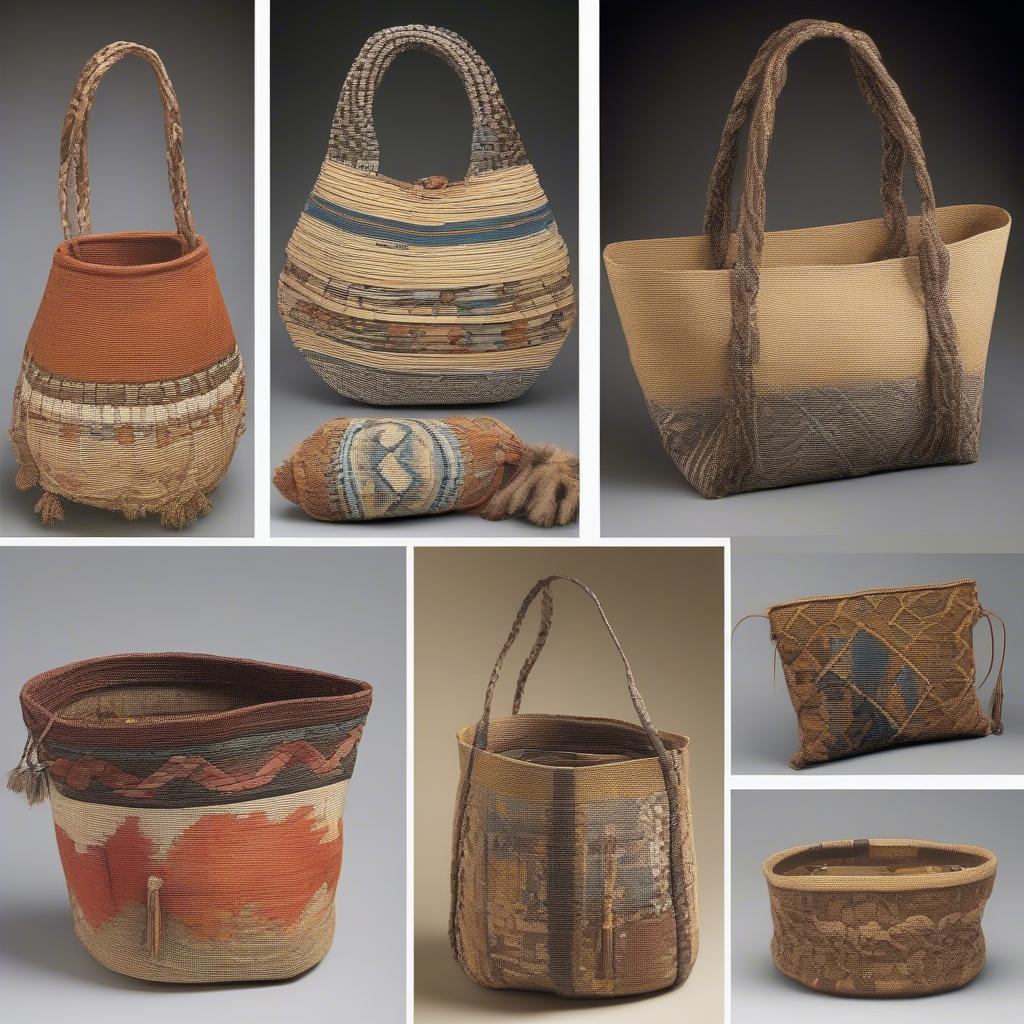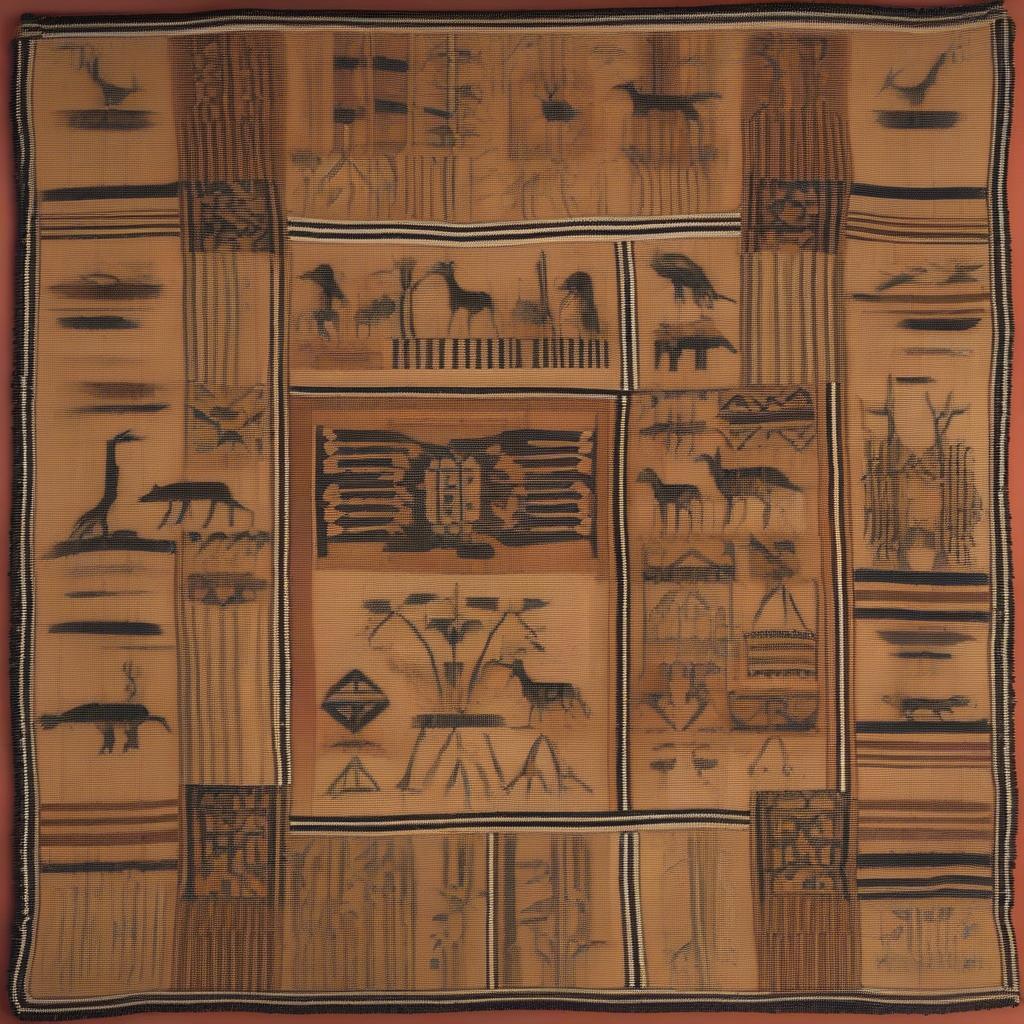Woven Bag
Native American Great Basin Woven Bags: A Legacy of Artistry and Utility
Native American Great Basin Woven Bags represent a remarkable intersection of artistry and practicality. These intricate creations, crafted by the indigenous peoples of the Great Basin region, served not just as functional carrying vessels but also as powerful expressions of cultural identity and artistic skill. From gathering food to transporting personal belongings, these bags were essential tools in daily life, reflecting the deep connection between the people and their environment.
Exploring the Intricacies of Great Basin Woven Bags
The Great Basin, a vast arid region spanning parts of Nevada, Utah, Oregon, Idaho, and California, was home to numerous indigenous tribes, each with its own distinct weaving traditions. While variations existed, certain common threads united the artistry of Great Basin woven bags.  Variety of Great Basin Woven Bag Styles
Variety of Great Basin Woven Bag Styles
Materials and Techniques: A Testament to Resourcefulness
Great Basin weavers demonstrated incredible resourcefulness in their choice of materials. Native plants like Indian hemp, willow bark, and tule reeds were meticulously harvested and processed into strong, pliable fibers. The weaving techniques employed varied, including twining, coiling, and plaiting, each resulting in unique textures and patterns. The intricate designs woven into these bags often held symbolic meaning, reflecting clan affiliations, spiritual beliefs, or stories passed down through generations.
What materials were traditionally used to create Great Basin woven bags? Traditionally, materials included Indian hemp, willow bark, and tule reeds.
Symbolism and Cultural Significance: More Than Just a Bag
Beyond their practical function, Great Basin woven bags held deep cultural significance. They were often adorned with intricate designs representing elements of the natural world, such as mountains, rivers, and animals. These motifs could also convey abstract concepts like spirituality, kinship, and identity.  Symbolic Designs on Great Basin Bags
Symbolic Designs on Great Basin Bags
How did Great Basin woven bags reflect cultural identity? The intricate designs and weaving techniques reflected the unique artistic traditions and cultural values of different tribes within the Great Basin region.
Preserving a Legacy: Native American Great Basin Woven Bags Today
Today, Native American Great Basin woven bags continue to be cherished as both historical artifacts and contemporary works of art. Museums and private collections house examples of these exquisite crafts, preserving them for future generations. Contemporary artists also carry on the tradition, adapting ancient techniques and designs to create stunning new pieces that honor their heritage while pushing the boundaries of creativity.
Caring for Your Native American Great Basin Woven Bag
If you are fortunate enough to own a Native American Great Basin woven bag, proper care is essential to ensure its longevity. Avoid exposing the bag to direct sunlight or excessive moisture, as these can damage the fibers. Store the bag in a cool, dry place, preferably wrapped in acid-free tissue paper. Handle the bag with clean hands to prevent the transfer of oils and dirt.
What is the best way to store a Great Basin woven bag? Store the bag in a cool, dry place wrapped in acid-free tissue paper.
Conclusion: The Enduring Beauty of Native American Great Basin Woven Bags
Native American Great Basin woven bags represent a powerful legacy of artistry, resourcefulness, and cultural expression. These meticulously crafted objects offer a glimpse into the rich history and traditions of the indigenous peoples of the Great Basin region. Whether admired for their practical function or their artistic beauty, these woven bags remain a testament to the enduring power of human creativity and cultural resilience.
FAQ
- What are Native American Great Basin woven bags made of? Traditionally, they were made from plant fibers like Indian hemp, willow bark, and tule reeds.
- What were these bags used for? They were used for carrying a variety of items, from food and water to personal belongings.
- What is the significance of the designs on the bags? The designs often held symbolic meanings related to nature, spirituality, clan affiliations, and storytelling.
- Where can I see examples of these bags? You can find them in museums, private collections, and sometimes for sale from reputable dealers and Native American artists.
- How can I care for a Great Basin woven bag? Store it in a cool, dry place wrapped in acid-free tissue paper and avoid exposure to direct sunlight and moisture.
- Are these bags still made today? Yes, contemporary Native American artists continue the tradition, creating beautiful and innovative pieces.
- How can I tell if a Great Basin woven bag is authentic? Purchasing from reputable dealers and artists specializing in Native American art is the best way to ensure authenticity.
For further information on Native American crafts and culture, please explore other related articles on our website.
Need assistance? Contact our 24/7 customer service team at Hotline: +84 388 951 999, or visit us at our offices in Hanoi, Vietnam or Tech Avenue, Suite 12, San Francisco, CA 94105, USA.
